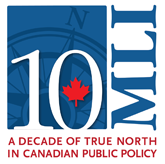
Chinese government state media platform, Xinhua, published and shared a crude children’s cartoon, leveraging the grim discovery of bodies at a former Kamloops residential school for propagandistic purposes on social media.
Canadians were universally shocked and horrified when news emerged about the grim discovery that the remains of 215 children were buried on the site of a British Columbia residential school.
At the turn of the last century, and well into the mid-1900s, Indigenous children were taken from families and communities, often forcibly, and relocated to government built residential schools. As the Globe has noted, “many children in residential schools faced brutal physical, emotional and sexual abuse, were deprived of food and proper nutrition, and suffered what the federal government’s Truth and Reconciliation Commission on the legacy of the schools found to be ‘very high’ rates of death, particularly during times of epidemic or disease.”
Canada’s Truth and Reconciliation Commission’s Missing Children Project has so far documented over 4100 Indigenous children who have died in Canadian residential schools. In 2015, the commission published a report titled “Missing Children and Unmarked Burials,” which stated that “many, if not most, of the several thousand children who died in residential schools are likely to be buried in unmarked and untended graves,” like the one found in BC.
The discovery received widespread international coverage, with most Western outlets treating the nature of the discovery and the memory of the victims with respect.

The mocking cartoon published by Chinese state media is intended to deflect attention away from its ongoing, well documented mass human rights abuses. The horrific discovery is being leveraged by the Chinese regime as an example of moral equivalency propaganda, known commonly as whataboutism.
The Chinese government has over the past years detained and imprisoned over one million ethnic Uyghurs, who have been subjected to humiliation, torture, rape, forced labour, sterilization, and other repressive measures.
In 2019, at least 18,000 Tibetan children were placed in Chinese government residential schools where they underwent a program of ethnic assimilation. Similar schools have been set up to control ethnic Mongolians in China.
The cartoon mocking the discovery and the memory of the victims, published by the Chinese state propaganda agency, has been shared to Xinhua’s over 90 million followers on Facebook. Another piece, published by the Chinese government’s English language propaganda platform, Global Times, uses the discovery to challenge the Canadian government’s moral authority on issues of human rights – accusing it of hypocrisy – a classic whataboutism tactic employed by authoritarian regimes that engage in human rights abuse.
This Chinese state propaganda tactic has had parallels in the Canadian debate on the Chinese government’s ongoing genocide against the Uyghur minority in Xinjiang.
During a June 4, 2021 debate in the Senate of Canada about a motion to recognize the mass human rights abuses against the Uyghur minority as a genocide, a Canadian senator who argued against the motion engaged in his own whataboutism and misdirection on the issue to justify opposing the motion.
The same Senator engaged in another propaganda tactic used by authoritarian regimes whereby criticism of the regime is equated with racial intolerance. The Soviet Union and the KGB, pioneered this tactic during the Cold War, whereby critics were silenced by discrediting their criticism of the Soviet regime as neo-fascism or “russophobia.”

Canadian policy makers, elected officials and media should be aware that these are authoritarian propaganda tactics intended to undermine Canada, and they should resist adopting similar language.

